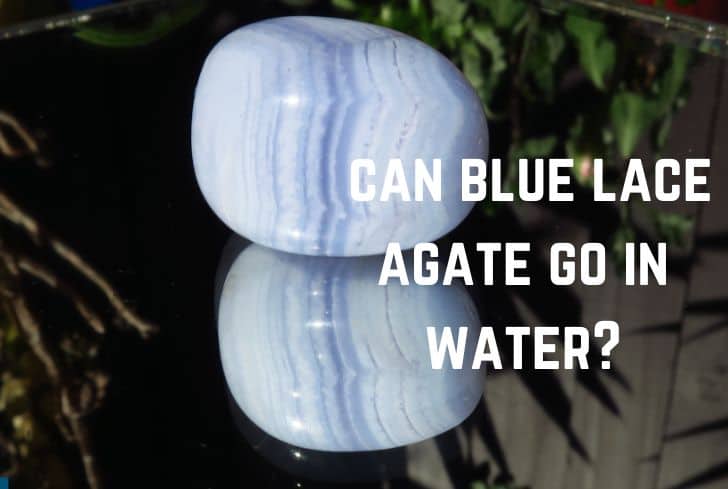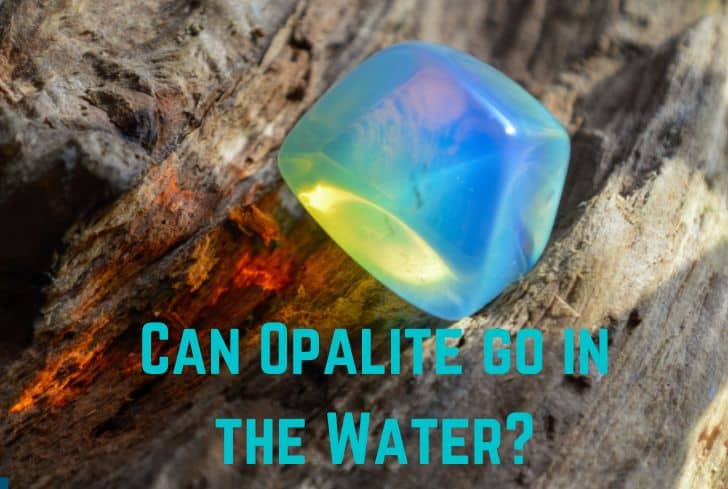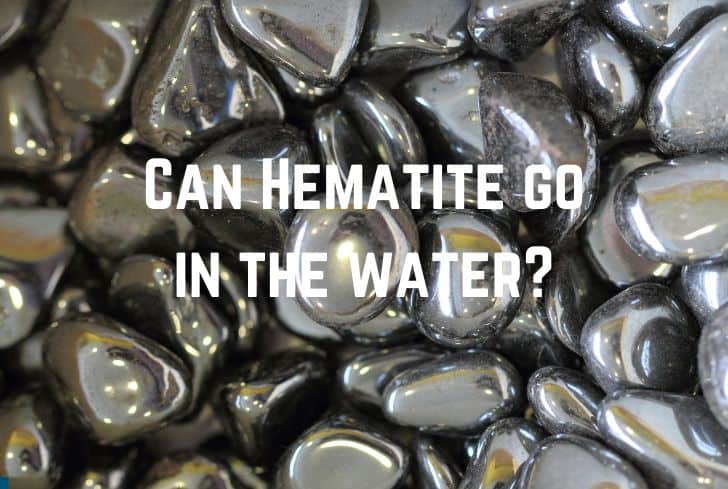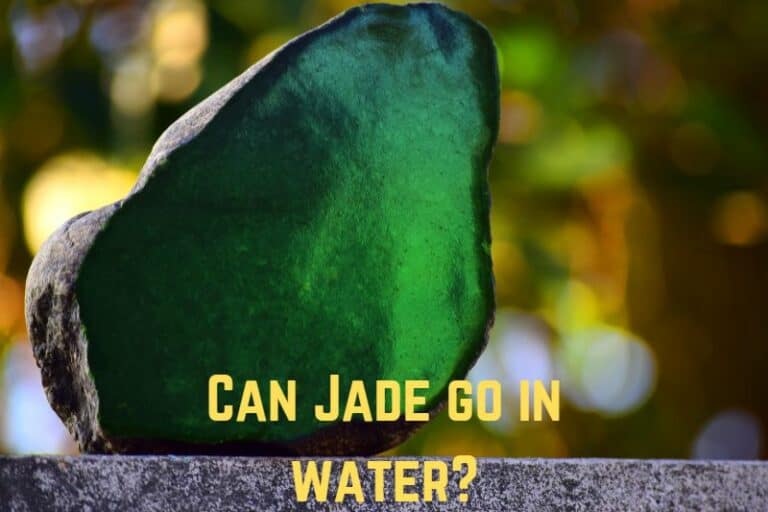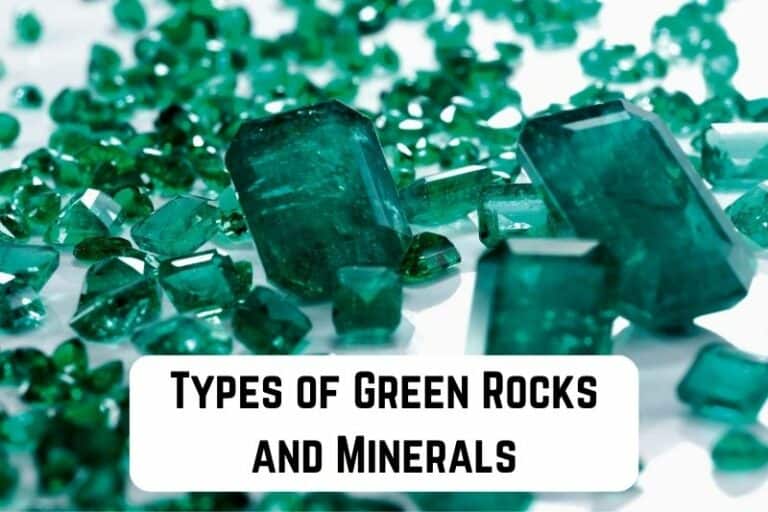Aventurine vs Amazonite (Full Comparison Guide)
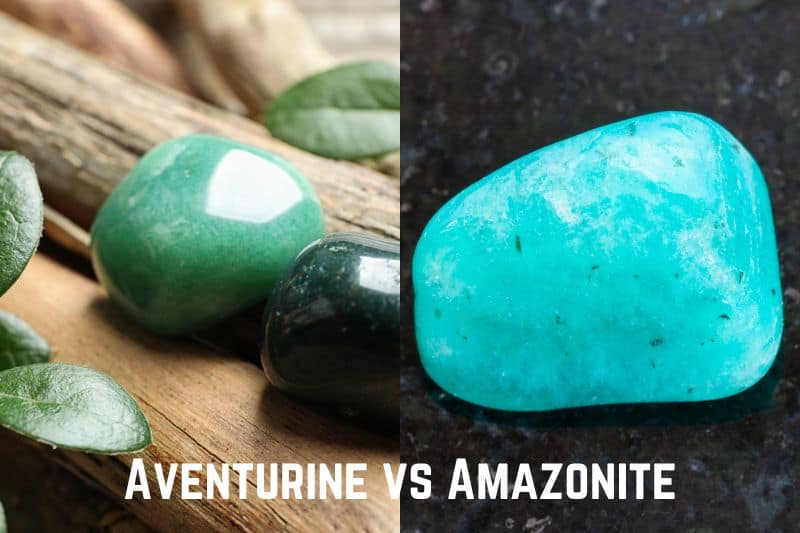
Aventurine and amazonite are both beautiful green stones that are widely used as gemstones. Due to their abundant quantity across the planet, both stones are quite affordable and are often used as alternatives to more expensive gemstones.
Have you ever wondered how Aventurine and Amazonite are different? In this article, we are going to discuss just that. We will talk about how they differ in terms of composition, color, texture, etc. We will also learn how to take care of them.
Read: Can Green Aventurine go in the Water? (And in Sun and Salt)
What is Aventurine?
Aventurine is a kind of quartz (crystalline mineral composed of silica), whose plate-like mineral inclusions give it a unique shimmering effect. It is usually green in color and is a popular semiprecious gemstone.

Aventurine is a form of quartz, so it is made up of silica or silicon dioxide (SiO2). It usually contains fuchsite (a green mica rich in chromium), which gives the stone its silvery green/blue shine.
These inclusions are also responsible for the gorgeous optical effect, which gives the stone its name. When light enters the stone, it strikes these inclusions and bounces off them. This reflection produces a beautiful shimmer known as “aventurescence”.
The stone is often translucent, but an abundance of fuchsite can sometimes make it opaque. Aventurine has a trigonal crystal system and conchoidal fracture. On the Mohs Hardness Scale, aventurine has a value of 6.5, so it can survive in water and is moderately resistant to scratches.
What is Amazonite?
Amazonite is a beautiful bluish-green mineral belonging to a potassium feldspar category called Microline. Its name comes from the Amazon River, from which the stones are believed to have been formerly obtained.
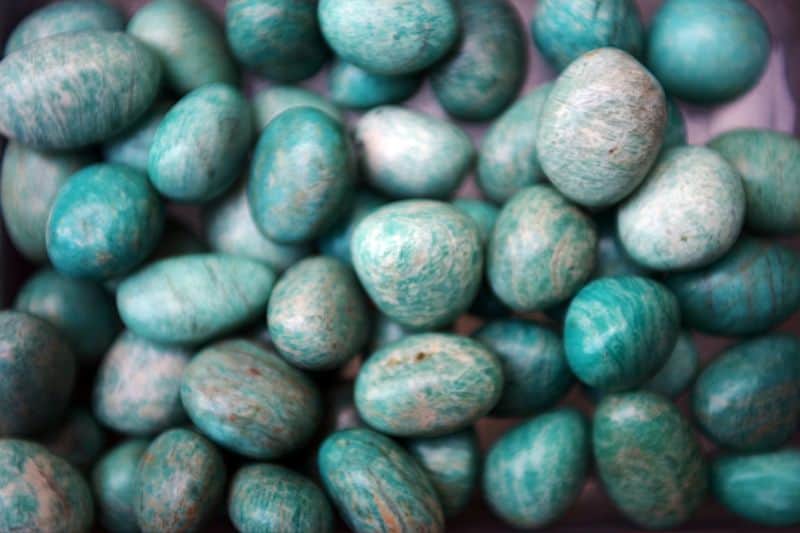
Amazonite is also known as the Amazon Stone because green stones were formerly obtained from the river; however, it is not certain if those stones were Amazonite. Today, it is mostly found in the US (Colorado, Virginia), Madagascar, Russia, Brazil, etc.
Amazonite is a microline, having the chemical formula of KAlSi3O8. It has a triclinic crystal structure, which means that the gemstone’s axes are of different lengths and do not meet at 90 degrees.
The mineral comes in beautiful variants of blue-green; this color is caused by the presence of water and lead. Amazonite has a hardness of 6-6.5, and although it lacks transparency, it is still is attractive (as well as affordable) stone that is used in jewelry.
Differences Between Aventurine & Amazonite
Chemical Composition
Aventurine is a kind of quartz while amazonite is a feldspar.
The two minerals differ significantly in their chemical composition. Aventurine is a type of quartz, meaning that it is made up of silica or silicon dioxide (SiO2). Quartz is the second most abundant mineral on our planet.
These crystals are quite hard and stable, so they can withstand high temperatures and chemical reactions; this is why they’re present in many types of rocks.
Amazonite, on the other hand, is a type of feldspar, which are the most abundant mineral on Earth. These are aluminum tectosilicate minerals, which also contain cations such as sodium, calcium, potassium, or barium.
Specifically, amazonite belongs to a potassium feldspar category called Microline. It has the chemical formula of KAlSi3O8.
Color
Both aventurine and amazonite can be green; however, aventurine can also exist in other colors. The sources of their colors are also different.
Most aventurine is green, ranging from light to dark variants. However, the mineral also comes in other colors. This depends on the inclusions present in it: hematite imparts a red/orange color, while dumortierite or blue quartz can give a blue color. Aventurine can also have white or light-colored areas due to inclusions.
Amazonite, in contrast, only exists in its distinctive bluish-green color. The exact shade can range from a pale blue-green to an intense one. These variations occur due to different concentrations of trace elements.
The two minerals acquire their colors from different sources. Aventurine is usually green in color due to the presence of fuchsite, which is a green-colored mineral containing chromium. The higher the concentration of fuchsite, the greener the aventurine piece and the more it shimmers.
Other inclusions can impart different colors to aventurine too.
The source of Amazonite’s color is a bit of a mystery. Some people used to believe that the color was due to copper because copper compounds often have blue-green colors. But in 1985, a study suggested that lead and water were responsible for its coloration.
So, lead and water, along with other elements (such as the presence of iron or copper), determine Amazonite’s appearance. The greater the leader amount, the greener piece. Water molecules in the mineral’s structure can also influence appearance.
They do so by affecting the way light interacts with the mineral. They influence the absorption and reflection of light, thereby making variations in Amazonite’s color perception.
Read: Agate vs Geode (Differences & Similarities)
Hardness
Aventurine and amazonite have different levels of hardness, but they can both be used as gemstones.
Mohs Hardness Scale is a common way of determining the hardness of a mineral, which measures the mineral’s scratch resistance relative to other minerals. Aventurine has a value of 6.5 to 7 on the scale.
This means that it can survive in water—minerals need to have a value above 5.0 on the Mohs Scale to be water safe—and is moderately resistant to scratches. However, excessive inclusions can lower its hardness and weaken it.
Amazonite, on the other hand, has a value of 6 to 6.5 on the Mohs Hardness Scale. So, it can also survive in water but is slightly softer than other jewelry stones like quartz (hardness of 7.0). Amazonite also has perfect cleavage and can break easily.
Therefore, these stones are prone to scratching from common use. But these stones are still great for jewelry that doesn’t experience excessive wear and tear, such as pendants, earrings, and brooches. They can also be turned into amazing ring stones with added protection.
In general, even though both stones can survive in water, they should not be immersed for long. Water can enter their crevices and expand their cracks, weakening the stone’s structure.
Pattern and Clarity
Aventurine can be translucent or opaque, depending on its inclusions; amazonite is always opaque.
The transparency of minerals depends on composition, crystal quality, inclusions, etc.
Aventurine is typically translucent to opaque; light can mostly pass through it, but it is not transparent enough to make objects/images appear clearly through it. Amazonite, on the other hand, is opaque: no light passes through it.
The two minerals are also different in terms of their patterns. Aventurine has a grainy texture: it will feel similar to sugar or fine sand when you touch it. It is also quite “glittery” due to its metal inclusions (the phenomenon called “aventurescence”).
Amazonite, on the other hand, has a smooth and uniform texture. However, it does not have a glittery effect: it is opaque and may have white stripes.
Rarity & Pricing
Both aventurine and amazonite are abundantly available, which makes them quite affordable.
Aventurine and amazonite are types of quartz and feldspar respectively, both of which are the two most abundant minerals on the planet. Given their abundance, they are quite affordable.
Their specific prices, as with most stones, depend on their color, clarity, size, and cut.
Aventurine is known for its beautiful shimmering effect and is a popular semiprecious stone. Amazonite lacks transparency, so it is rarely faceted (turning a rough piece of the mineral into a stone with numerous flat planes/facets suitable for jewelry).
However, amazonite is still great for people who like opaque stones. Its bluish-green color is quite attractive, and it is often used as an alternative to turquoise in traditional silver jewelry. It brings a similar look without the expensive price. It is also used in carvings and cabochons.
In general, amazonite is more valuable than Aventurine due to its slightly lower availability and popularity.
Location
Aventurine and amazonite are found in many locations across the world.
Aventurine is found in India, Brazil, South Africa, etc. The popular green varieties usually come from India and Russia (especially the Ural Mountains region).
Earlier, Amazonite stones were found almost exclusively in the Ilmensky Mountains in Russia, where they occurred in granitic rocks. But now, Amazonite stones are found all around the globe.
They can be found in granitic rocks of China and Libya; in alkali granite rocks of Mongolia; in pegmatite rocks of Sweden and the United States (Virginia), etc.
Zodiac Sign & Symbol
Both aventurine and amazonite have different zodiac and metaphysical associations.
Both stones are calming and help us to connect to our hearts. They can also improve our communication and get us in touch with our intuition. Aventurine is associated with Mercury, which is linked to Virgo and Gemini. It is said to promote confidence and prosperity.
Amazonite, on the other hand, is associated with Uranus. This is connected with the zodiac sign of Aquarius. Amazonite is believed to bring clarity and optimism
Care
Aventurine and amazonite are both moderately hard stones that require good care.
On the Mohs Hardness Scale, aventurine has a value of 6.5 to 7, while amazonite has a value of 6 to 6.5. This means that, although both of them are safe to go underwater, they are only moderately resistant to scratches.
Therefore, they should not be used for jewelry that undergoes excessive wear and tear. Instead, they are better for pendants, earrings, and brooches, etc. They should also not be immersed for too long in the water.
Amazonite has more cracks than aventurine, so it is even more prone to damage. The best way to clean them is by dusting them with a dry cloth. You can then give them a quick rinse if needed. You can recharge them with sound or through moonlight (sunlight may cause the stones to fade).
Read: Can Amazonite Go in Water? (Yes, But…)
Conclusion
In this article, we have talked about aventurine and amazonite, both of which are beautiful gemstones. We looked at their differences, such as composition, color, location, etc. Finally, we also learned how to take care of them.


